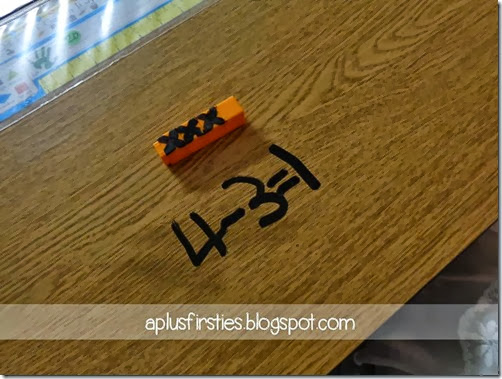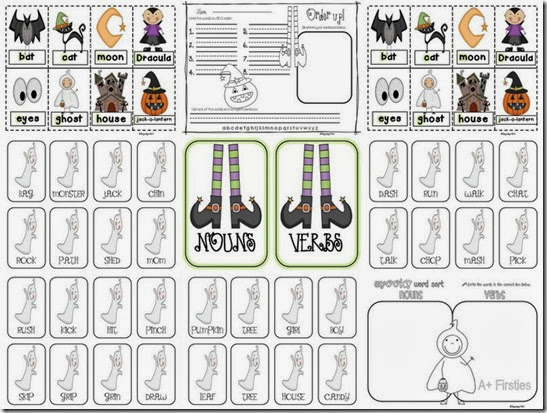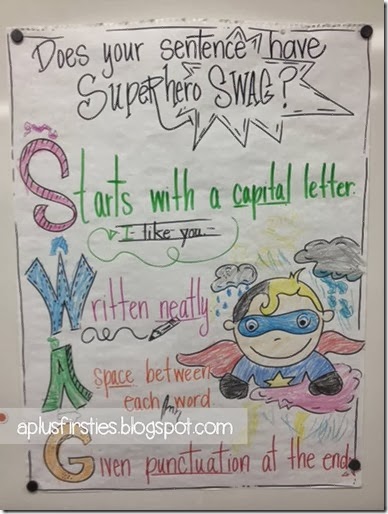We’ve been busily establishing routines for guided reading over the last couple of weeks. It’s hard to believe that we’re almost at the END of October already! It took 5 weeks to get our station routines in place….all to be able to successfully meet in small groups. Wellll, NOW all the pieces of our day are in place! Let’s take a closer look….at small groups!
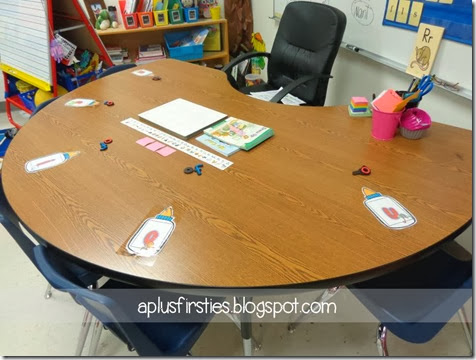
Participating in FREEBIELICIOUS' book study of The Next Step in Guided Reading by Jan Richardson last summer was some of the best PD I’ve ever had! I’m always curious, always looking for new ways to improve how I work with my kiddos. I leave each day thinking….what can I do to make it better tomorrow? Reading this book has helped me to focus on research based techniques to guide my firsties along their reading journey. It’s been so exciting to launch guided reading! They’re ALREADY showing growth!
Each day, our guided reading table is [mostly] clear. Ha! Vowels are on the table as a reference and to serve as a management piece. To avoid… “that’s MY seat” arguments, each student sits at the exact same vowel each and every time they come to the table. We’ve been using whiteboards at small group, BUT you’ll find out a little further down why they’re getting ready to go away.
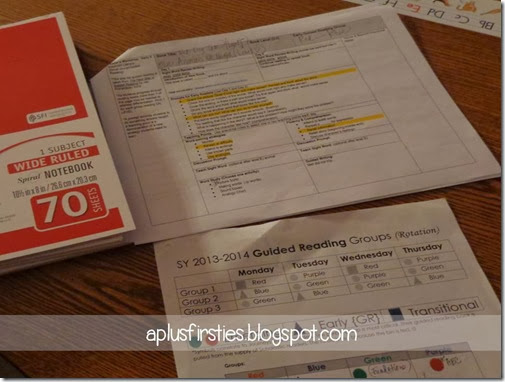
My lesson plans are always handy. One…because the prompts and teaching points for each group are highlighted on them and two…because I need doodle paper. Once at the guided reading table, I transform into a doodling, anecdotal note taking, listening, prompting, guiding, questioning, running record taking octopus! OR…at least that’s what it feels like trying to do so many things at once!
The little chart at the bottom is an example of how I rotate my groups to meet for guided reading. In a perfect world, I’d meet with all of them every day. The students who have the greatest level of need are seen most often. 3 rotations at about 20 minutes-ish each + a mini-lesson in between each rotation adds up to our 2 hour literacy block being packed from start to finish. Did I mention we have enrichment during this time too? Thank heaven for a supportive principal and 2 awesome grade level helpers that assist during this time so that intervention and enrichment do not equal interruptions to our literacy block routines that we’ve worked so hard to build.
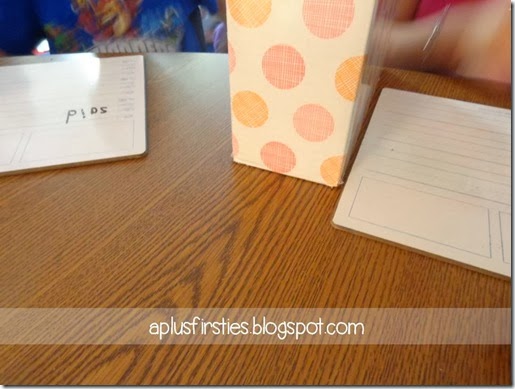
Students bring their book boxes to the table and place them neatly in between themselves and the friend sitting next to them. By doing this, they create a private area to review 3 sight words each day. Because they are divided by their book boxes, there is less of a temptation to copy from their neighbors’ boards instead of using their own visual memory to write the words we review to start each lesson.
Our lessons begin and end with writing sight words. What we have quickly discovered is handing them out, putting them away and taking them out again is annoying! After talking with another teacher on my team, we discovered we weren’t the only ones who thought so. She solved this problem by attaching laminated strips of writing paper to her guided reading table. *LOVE*! I’ll be stopping by school for a few minutes tomorrow to do the same. I’ve seen pins showing teachers using placemats as their whiteboards, but wanted something permanent, that I won’t have to move.
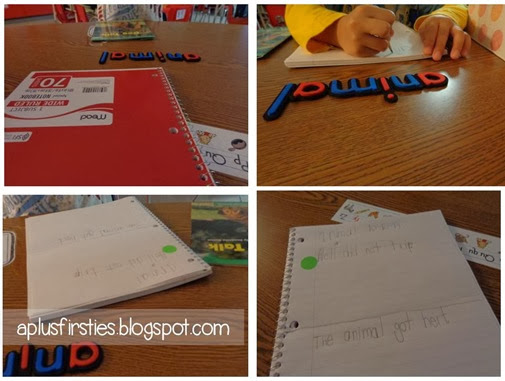
What’s the BEST thing about meeting in small group? Differentiation! You get to meet students exactly where they are and stretch them as far as their little minds will take them! The pictures above are from my transitional reading group. They’re each reading above grade level…the name of the game for them is comprehension and BIGGER words! After beginning small groups with a sight word review, students are all given a “go” signal at separate times to begin reading softly. Each student quietly reads at their own pace while I listen in and either take running records or address teaching prompts about something previously taught. We do not choral read or partner read at this time. Guided reading is all about using our strategies to decode words and draw meaning from them.
The book each student reads is a leveled text that will work well for the comprehension and word attack skills we’re practicing throughout the week. During our first meeting of the week, I take a quick running record as students read in order to be sure the book they’ve been given is a “good fit”. No forms, no copies….just a quick check in “doodle” format on the back of my lesson plans. These doodles will also help to guide any changes that need to be made in grouping students. We’ve already made a few switcheroos!
Having taught 1st grade for the past 4 years, I’ve always pulled small groups for reading. The difference for me this year, is the inclusion of guided writing. When you know better, you do better…..and share it for the benefit of all!
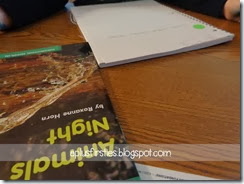
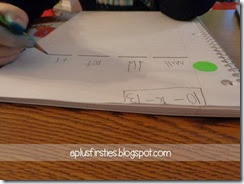
Different book…different group. Same comprehension skill. Same focus, but leveled for their ability. This is the emergent group. They’re reading on grade level. If you take a close look at this friend’s notebook, you’ll see something that was not on the previous friend’s page. With this group, lines have been drawn to help students differentiate between letters and words and to guide the spacing in their sentences. Just a little added support. I provide a sentence. Students echo, then write. The lines help to make sure they have all of the words in their sentence too! =) We’ll use these notebooks for reading reflections, graphic organizers, and other activities as we progress through the year. They will only be used in small group.
The green dot simply serves as a reminder to begin on the left. They'll only be used until routines are committed to memory. I’m very, very visual, so I tend to teach with a lot of visual cues.
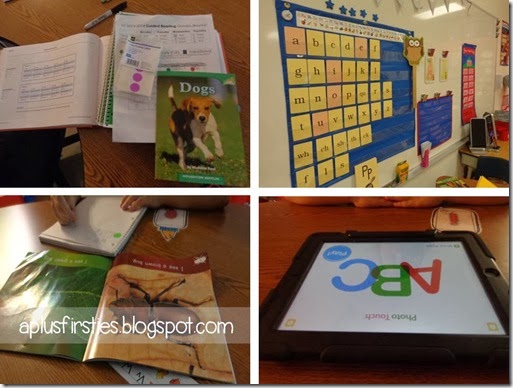
I have 4 groups in all. The remaining 2 groups are Pre-A to emergent readers. They’re groups are smaller and they receive additional instruction in phonics. We use Wilson Fundations. They’re books primarily contain repetitive phrases/sentences, are highly predictable, and have a lot of picture support. Students that are in critical need of letter knowledge or phonemic awareness skills remain at the table after their group has been dismissed in order to play games and learn by way of the handy dandy iPad. The best part of it all? Every reader walks away feeling successful!
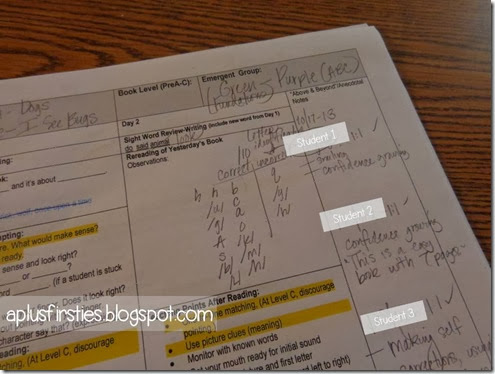
By the end of our very first small group each week, my lesson plans are no longer neat and tidy. I’ve written in information that will help guide each student through the rest of the week and to help guide planning for the next.
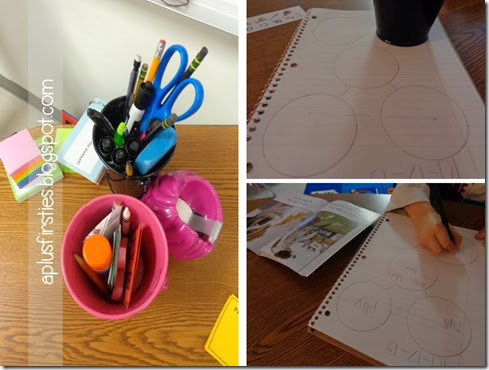
Every thing at the guided reading table serves a purpose. Sticky notes are a must! Expo markers, erasers, pencils, fun pointers, picture sorts, sound boxes, and magnetic letters for word building are always close by. There is an alphabet chart attached to the middle of the table and on the board just behind where I sit {to model word building}. The 3 sticky notes just below the alphabet chart are used as sound boxes! We *LOVE* sticky notes! Sight words charts for the transitional reading group are being prepared as well. I keep these things in a caddy or little bins that are easily moved out of the way until we need them.
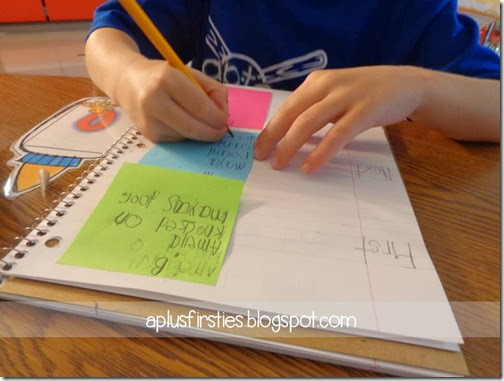
Each guided reading group consists of time to review 3 sight words, quiet reading with teacher prompting, teaching points after reading, a quick discussion (if appropriate) and learning of one new sight word…..TIMES 3 groups!!! Wiping the sweat from your brows yet? We’re not through!
Sound like a lot! It is! BUT it’s my FAVORITE 2 hours of the entire day!!! Think it ends there?
Nope….
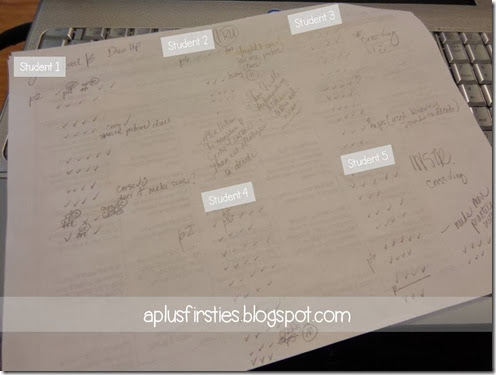
….last, but not least, I have to look it all over to analyze it before we move forward with our next book. We keep each book and do repeated readings of it over the course of a week. Repeated readings help to build fluency. When I’m looking at each student’s behaviors during guided reading, I’m looking and listening to tell what kind of miscues they’re making and to determine how accurately they’re reading the text. Monitoring accuracy does not equal assessing fluency. That’s different.

On Fridays, we assess our comprehension, turn in our guided reading books and return all of our “good fit” books back to the class library. On Monday….the cycle starts all over again and makes me one happy, happy, happy teacher!
Thanks for reading though this quick run of our small group routines! Click the pics below to grab a couple tools to add to your guided reading tool-belt! The pictures can be used for picture sorts of your choice. The lined paper is what I’m heading to school to attach to my table so we don’t have to haul out those pesky whiteboards anymore!
Happy reading! Laters gators!
Clipart courtesy of Dots of Fun
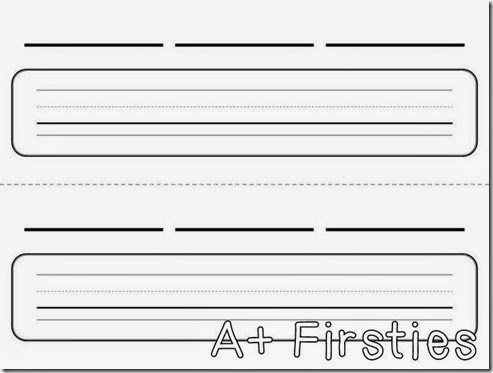
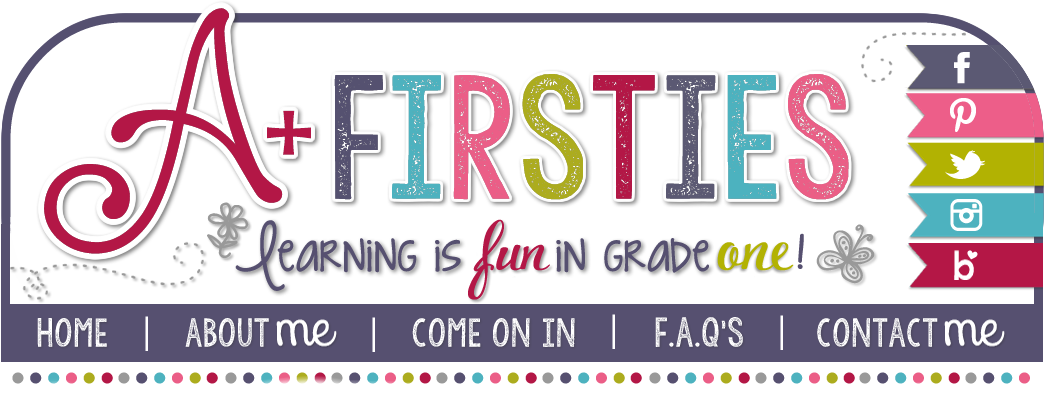



![fiveforfriday2_thumb[3][1] fiveforfriday2_thumb[3][1]](http://lh6.ggpht.com/-ON8NxdQzcKQ/UmIJ_OSrq6I/AAAAAAAAECY/ixOa04xPdAE/fiveforfriday2_thumb%25255B3%25255D%25255B1%25255D_thumb%25255B1%25255D.jpg?imgmax=800)



